101 Emerging Effects of Blockchain Development Trends in 2024
In 2024, the blockchain landscape is experiencing unprecedented growth and evolution. As a technology that was once synonymous with cryptocurrencies, blockchain has now permeated almost every industry, bringing with it a myriad of transformative effects. From finance to healthcare, supply chain management to entertainment, the emerging effects of blockchain development trends are vast and multifaceted. Here, I explore 101 of these effects, providing a comprehensive view of how blockchain is reshaping our world.
Finance and Banking
- Decentralized Finance (DeFi) Expansion: DeFi platforms continue to grow, providing alternative financial services without traditional intermediaries.
- Enhanced Security: Blockchain’s immutable nature significantly reduces fraud and cyber-attacks in financial transactions.
- Cross-Border Payments: Instant and cost-effective international transactions are now possible, enhancing global trade.
- Smart Contracts: Automation of agreements and transactions is increasing efficiency and reducing the need for intermediaries.
- Tokenization of Assets: Real estate, stocks, and other assets can now be tokenized, increasing liquidity and accessibility.
- Digital Identity Verification: Blockchain ensures secure and verifiable digital identities, reducing identity theft and fraud.
- Central Bank Digital Currencies (CBDCs): Several countries are developing and piloting CBDCs, reshaping national monetary systems.
- Regulatory Compliance: Enhanced transparency and traceability help financial institutions comply with regulatory requirements.
- P2P Lending Platforms: Direct lending between individuals without banks as intermediaries is becoming more prevalent.
- Automated Auditing: Real-time auditing capabilities streamline financial reporting and compliance.
Healthcare
- Secure Patient Data: Blockchain ensures patient data is securely stored and accessible only to authorized personnel.
- Interoperable Health Records: Patients can easily transfer their medical records between different healthcare providers.
- Drug Traceability: The pharmaceutical supply chain benefits from enhanced traceability, reducing counterfeit drugs.
- Clinical Trials Transparency: Blockchain improves the transparency and reliability of clinical trial data.
- Health Insurance Claims: Automated claims processing reduces fraud and administrative overhead.
- Telemedicine: Secure and verifiable remote consultations are facilitated through blockchain.
- Medical Device Management: Tracking and managing medical devices through their lifecycle is becoming more efficient.
- Patient Consent Management: Patients can give and revoke consent for data sharing easily.
- Research Collaboration: Enhanced collaboration and data sharing among researchers are leading to faster medical advancements.
- Genomic Data Security: Protecting sensitive genomic data with blockchain ensures privacy and security.
Supply Chain Management
- End-to-End Visibility: Blockchain provides real-time tracking of goods throughout the supply chain.
- Counterfeit Prevention: Authenticity of products can be verified, reducing counterfeit goods.
- Efficient Logistics: Automation and real-time tracking improve logistics efficiency and reduce costs.
- Sustainability Tracking: Consumers and companies can verify the sustainability practices of products.
- Supplier Transparency: Enhanced transparency in supplier operations fosters trust and accountability.
- Smart Contracts for Procurement: Automating procurement processes reduces delays and errors.
- Inventory Management: Real-time inventory tracking reduces overstocking and stockouts.
- Quality Assurance: Tracking product conditions throughout the supply chain ensures quality.
- Customs and Compliance: Streamlining customs procedures and ensuring compliance with regulations.
- Food Safety: Traceability from farm to table enhances food safety and reduces contamination risks.
Real Estate
- Property Tokenization: Fractional ownership of real estate properties becomes accessible to more investors.
- Transparent Transactions: Blockchain ensures transparency in property transactions and ownership records.
- Automated Property Management: Smart contracts automate rental agreements and property management tasks.
- Efficient Title Management: Digital titles on the blockchain reduce fraud and simplify title management.
- Crowdfunding Real Estate Projects: Blockchain enables crowdfunding for real estate development.
- Streamlined Due Diligence: Easier verification of property details and history.
- Lower Transaction Costs: Reduced intermediaries and paperwork lower the cost of real estate transactions.
- Cross-Border Real Estate Investments: Easier for investors to buy properties in different countries.
- Instant Settlements: Real-time settlement of transactions increases efficiency.
- Smart Lease Agreements: Automated lease agreements and rent collection.
Entertainment and Media
- Content Ownership and Royalties: Artists and creators can track and manage their royalties in real-time.
- Digital Collectibles (NFTs): Non-fungible tokens (NFTs) allow for ownership and trading of unique digital assets.
- Transparent Ticketing: Blockchain reduces ticket fraud and scalping.
- Decentralized Streaming Platforms: Content creators have more control and earn directly from their audience.
- Crowdfunding and Fan Engagement: Artists can raise funds and engage with fans through blockchain platforms.
- Advertising Transparency: Verifiable metrics and ad spending reduce fraud in advertising.
- Rights Management: Simplified rights management and licensing processes.
- Revenue Sharing: Automated and transparent revenue sharing among stakeholders.
- Content Curation: Decentralized content platforms where users have a say in curation.
- Immersive Experiences: Blockchain supports the development of immersive and interactive digital experiences.
Government and Public Sector
- Voting Systems: Blockchain-based voting ensures transparency and reduces electoral fraud.
- Public Records Management: Secure and immutable public records improve trust and efficiency.
- Tax Collection: Streamlined and transparent tax collection processes.
- Welfare Distribution: Ensuring accurate and efficient distribution of welfare benefits.
- Digital Identities: Secure digital identities for citizens.
- Land Registry: Transparent and tamper-proof land registry systems.
- Grant Management: Efficient and transparent management of public grants and funds.
- Public Procurement: Reducing corruption and inefficiencies in public procurement processes.
- Law Enforcement: Enhancing evidence management and criminal record keeping.
- Disaster Relief: Streamlining disaster relief efforts and fund distribution.
Education
- Credential Verification: Instant verification of academic credentials and certificates.
- Decentralized Learning Platforms: Peer-to-peer learning and skill-sharing platforms.
- Scholarship Distribution: Transparent and efficient distribution of scholarships and grants.
- Student Records Management: Secure and portable student records.
- Continuing Education Credits: Simplified tracking and management of continuing education credits.
- Global Collaboration: Facilitating global collaboration and resource sharing among educational institutions.
- Automated Administration: Streamlining administrative processes and reducing paperwork.
- E-Transcripts: Instant and verifiable digital transcripts.
- Secure Online Assessments: Ensuring the integrity of online exams and assessments.
- Open Educational Resources: Secure and verifiable sharing of open educational resources.
Energy
- Decentralized Energy Grids: Peer-to-peer energy trading and decentralized energy grids.
- Renewable Energy Certificates: Transparent tracking and trading of renewable energy certificates.
- Energy Usage Tracking: Real-time tracking and optimization of energy usage.
- Efficient Billing: Transparent and accurate energy billing processes.
- Carbon Credits: Transparent trading and verification of carbon credits.
- Grid Management: Enhanced management and optimization of energy grids.
- Energy Storage: Efficient tracking and management of energy storage systems.
- Sustainable Practices: Verifiable tracking of sustainable energy practices.
- Smart Contracts for Energy Sales: Automated and efficient energy sales agreements.
- Microgrids: Supporting the development and management of microgrids.
Transportation and Logistics
- Fleet Management: Real-time tracking and management of vehicle fleets.
- Automated Toll Collection: Streamlined and transparent toll collection processes.
- Vehicle Maintenance: Secure and transparent vehicle maintenance records.
- Cargo Tracking: Real-time tracking of cargo and shipments.
- Smart Contracts for Logistics: Automating logistics contracts and payments.
- Ride-Sharing Platforms: Decentralized ride-sharing platforms.
- Supply Chain Finance: Transparent and efficient supply chain financing solutions.
- Insurance: Transparent and efficient insurance processes for transportation.
- Customs Processes: Streamlined and transparent customs processes.
- Freight Management: Enhanced management and optimization of freight logistics.
Technology and Innovation
- Interoperability: Enhancing interoperability between different blockchain platforms.
- Quantum-Resistant Security: Developing quantum-resistant encryption methods for blockchain.
- Scalability Solutions: Innovative solutions to improve blockchain scalability.
- Decentralized Autonomous Organizations (DAOs): Supporting the development and management of DAOs.
- Cross-Chain Solutions: Facilitating seamless transactions between different blockchains.
- Enhanced Privacy: Developing privacy-preserving technologies for blockchain.
- IoT Integration: Integrating blockchain with the Internet of Things (IoT) for secure and transparent data sharing.
- Artificial Intelligence: Combining AI with blockchain for advanced data analysis and decision-making.
- Data Marketplaces: Developing decentralized data marketplaces for secure and transparent data sharing.
- Smart City Solutions: Supporting the development of smart city solutions.
- Blockchain as a Service (BaaS): Providing easy access to blockchain technology for businesses and developers.
Conclusion
In 2024, the effects of blockchain development trends are profound and far-reaching. This technology, once confined to the realm of cryptocurrencies, is now a catalyst for innovation and efficiency across diverse industries. As blockchain continues to evolve, its impact will only grow, driving us toward a more transparent, secure, and interconnected world. The future of blockchain is bright, and its potential is limitless. As we navigate this transformative journey, staying informed and adaptable will be key to leveraging the full benefits of blockchain technology.
Thank you



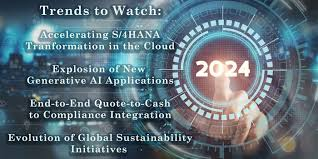
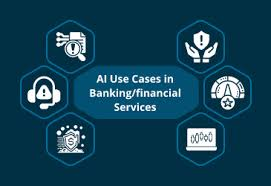
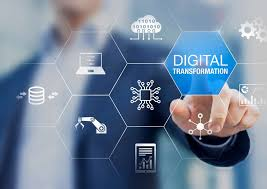


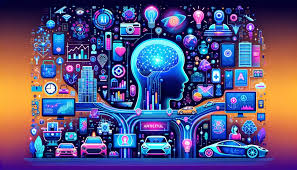


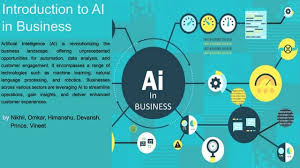


.jpg)